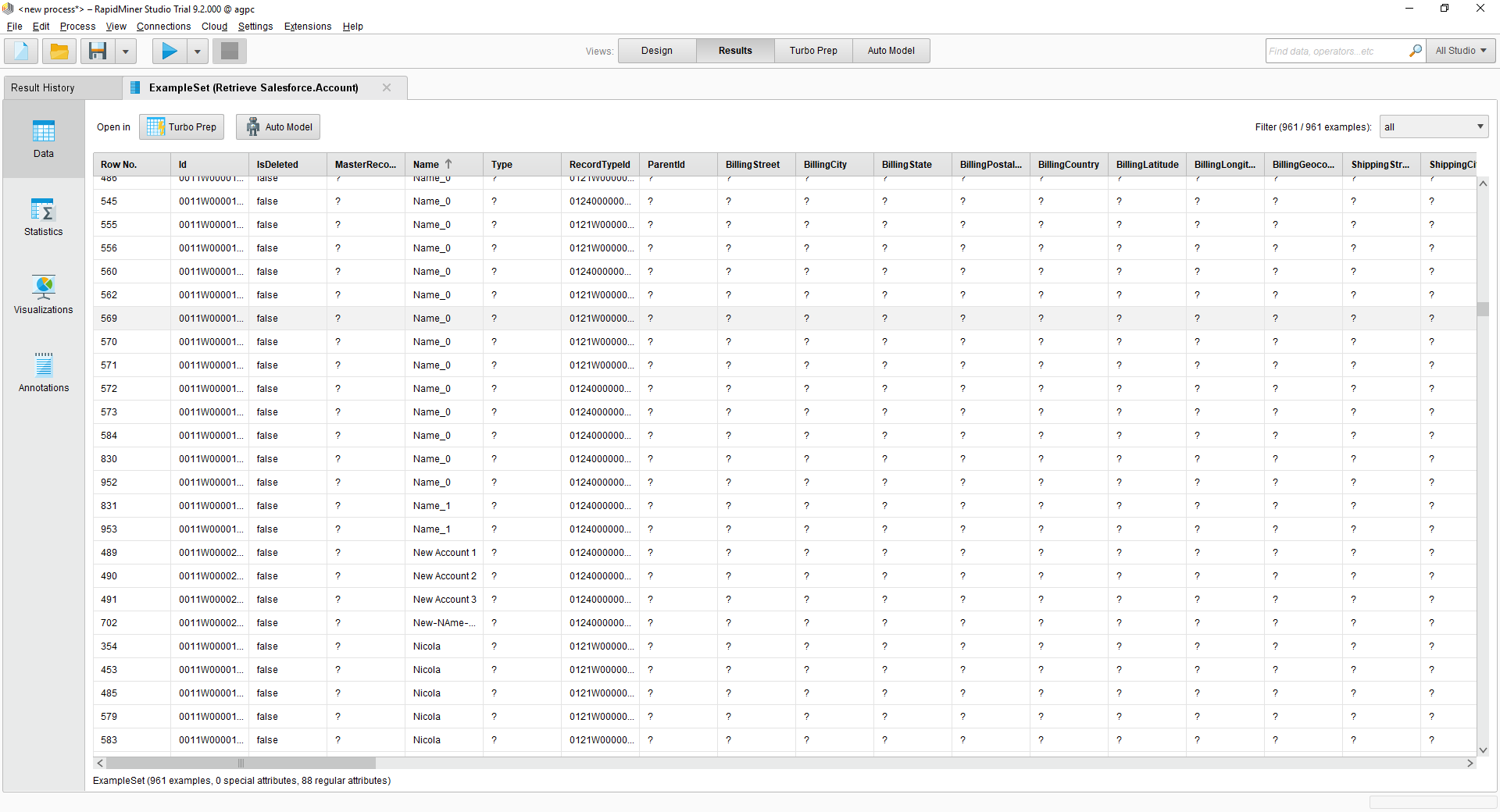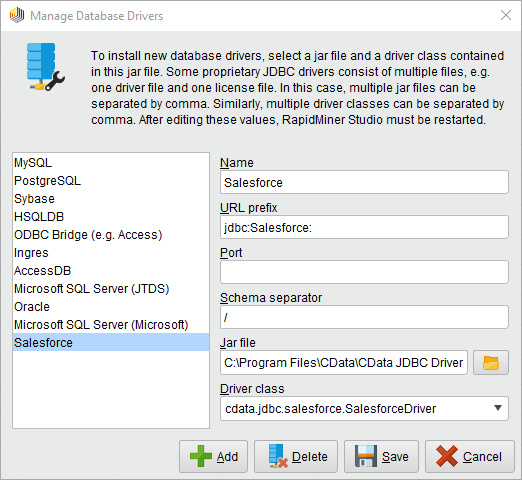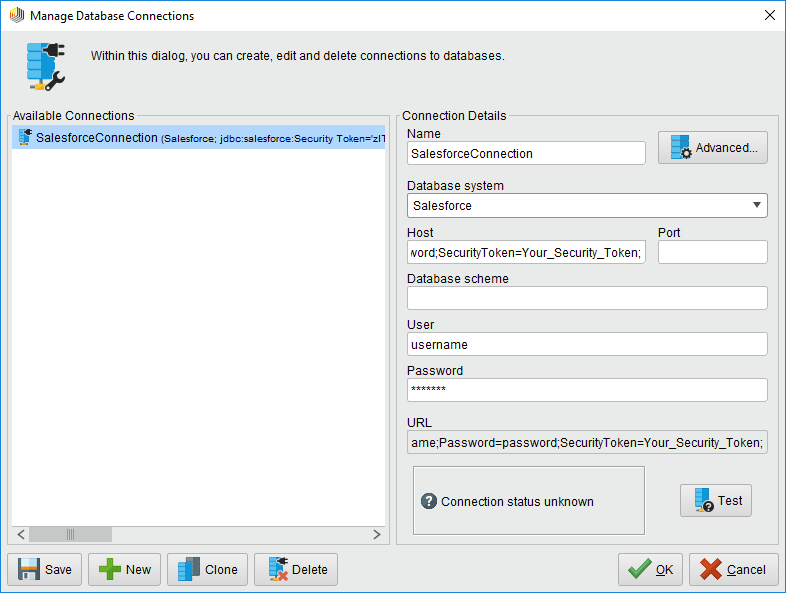Discover how a bimodal integration strategy can address the major data management challenges facing your organization today.
Get the Report →Connect to EnterpriseDB Data in RapidMiner
Integrate EnterpriseDB data with standard components and data source configuration wizards in RapidMiner Studio.
This article shows how you can easily integrate the CData JDBC driver for EnterpriseDB into your processes in RapidMiner. This article uses the CData JDBC Driver for EnterpriseDB to transfer EnterpriseDB data to a process in RapidMiner.
Connect to EnterpriseDB in RapidMiner as a JDBC Data Source
You can follow the procedure below to establish a JDBC connection to EnterpriseDB:
- Add a new database driver for EnterpriseDB: Click Connections -> Manage Database Drivers.
- In the resulting wizard, click the Add button and enter a name for the connection.
- Enter the prefix for the JDBC URL:
jdbc:enterprisedb: - Enter the path to the cdata.jdbc.enterprisedb.jar file, located in the lib subfolder of the installation directory.
- Enter the driver class:
cdata.jdbc.enterprisedb.EnterpriseDBDriver![The JDBC driver configuration. (Salesforce is shown.)]()
- Create a new EnterpriseDB connection: Click Connections -> Manage Database Connections.
- Enter a name for your connection.
- For Database System, select the EnterpriseDB driver you configured previously.
- Enter your connection string in the Host box.
The following connection properties are required in order to connect to data.
- Server: The host name or IP of the server hosting the EnterpriseDB database.
- Port: The port of the server hosting the EnterpriseDB database.
You can also optionally set the following:
- Database: The default database to connect to when connecting to the EnterpriseDB Server. If this is not set, the user's default database will be used.
Connect Using Standard Authentication
To authenticate using standard authentication, set the following:
- User: The user which will be used to authenticate with the EnterpriseDB server.
- Password: The password which will be used to authenticate with the EnterpriseDB server.
Connect Using SSL Authentication
You can leverage SSL authentication to connect to EnterpriseDB data via a secure session. Configure the following connection properties to connect to data:
- SSLClientCert: Set this to the name of the certificate store for the client certificate. Used in the case of 2-way SSL, where truststore and keystore are kept on both the client and server machines.
- SSLClientCertPassword: If a client certificate store is password-protected, set this value to the store's password.
- SSLClientCertSubject: The subject of the TLS/SSL client certificate. Used to locate the certificate in the store.
- SSLClientCertType: The certificate type of the client store.
- SSLServerCert: The certificate to be accepted from the server.
Built-in Connection String Designer
For assistance in constructing the JDBC URL, use the connection string designer built into the EnterpriseDB JDBC Driver. Either double-click the JAR file or execute the jar file from the command-line.
java -jar cdata.jdbc.enterprisedb.jarFill in the connection properties and copy the connection string to the clipboard.
![Using the built-in connection string designer to generate a JDBC URL (Salesforce is shown.)]()
A typical connection string is below:
User=postgres;Password=admin;Database=postgres;Server=127.0.0.1;Port=5444 - Enter your username and password if necessary.
![The connection to the JDBC data source. (Salesforce is shown.)]()
You can now use your EnterpriseDB connection with the various RapidMiner operators in your process. To retrieve EnterpriseDB data, drag the Retrieve operator from the Operators view.
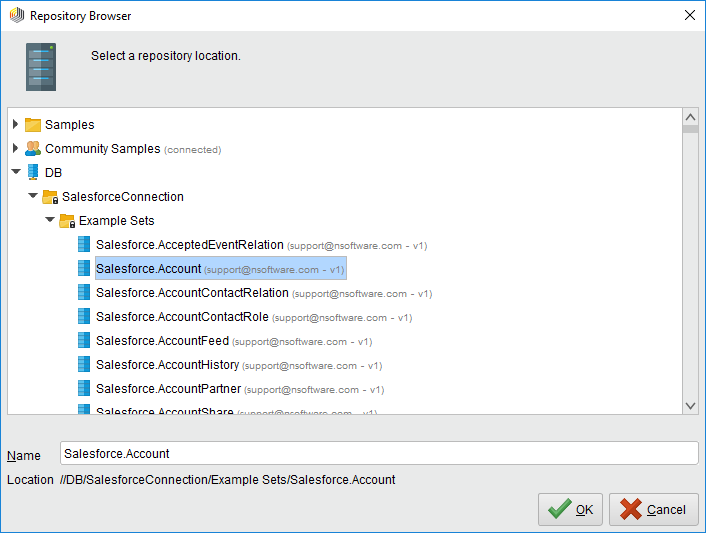 With the Retrieve operator selected, you can then define which table to retrieve in the Parameters view by clicking the folder icon next to the "repository entry." In the resulting Repository Browser, you can expand your connection node to select the desired example set.
With the Retrieve operator selected, you can then define which table to retrieve in the Parameters view by clicking the folder icon next to the "repository entry." In the resulting Repository Browser, you can expand your connection node to select the desired example set.
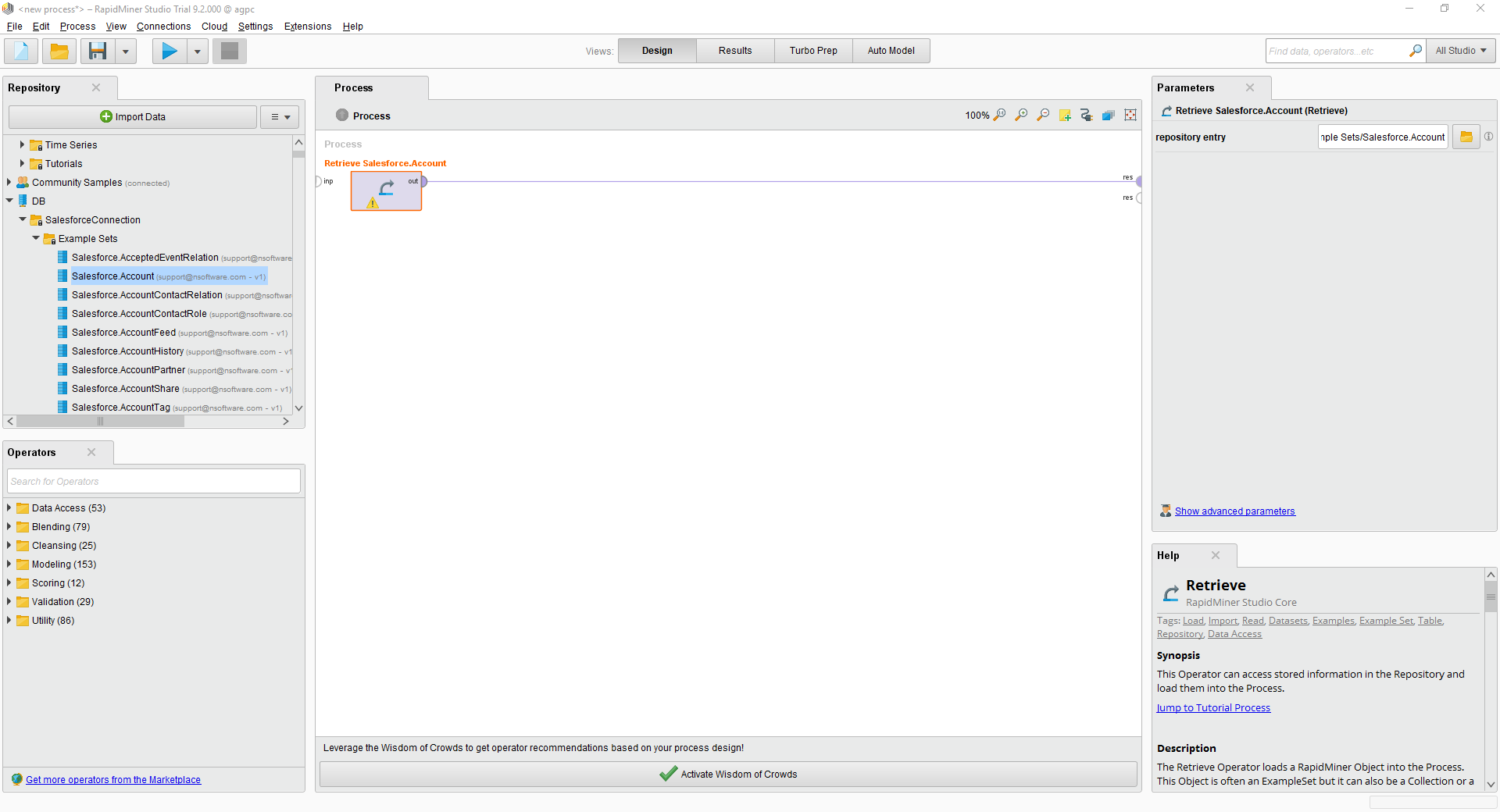
Finally, wire the output to the Retrieve process to a result, and run the process to see the EnterpriseDB data.
